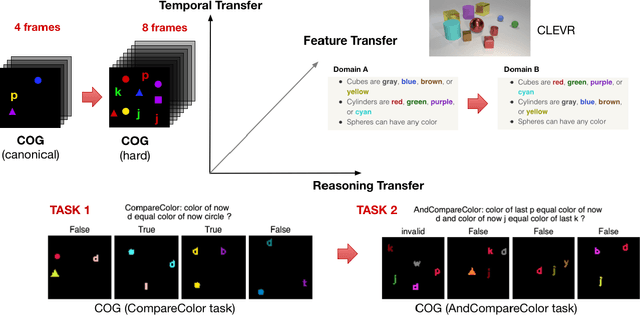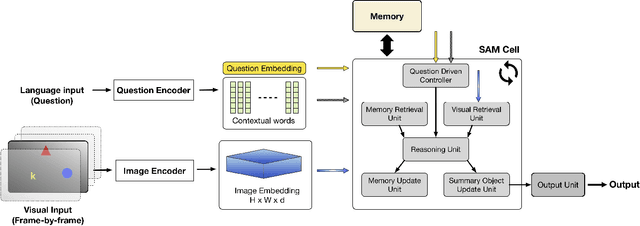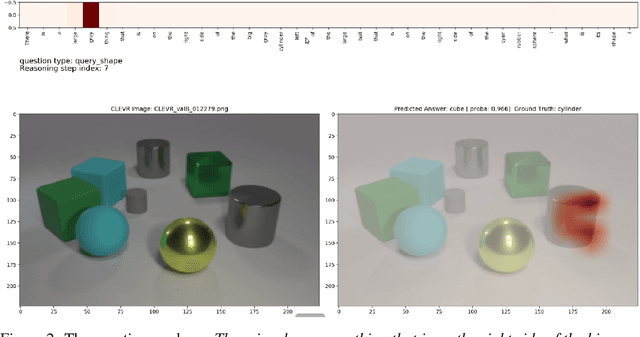Vincent Albouy
Transfer Learning in Visual and Relational Reasoning
Nov 27, 2019



Abstract:Transfer learning is becoming the de facto solution for vision and text encoders in the front-end processing of machine learning solutions. Utilizing vast amounts of knowledge in pre-trained models and subsequent fine-tuning allows achieving better performance in domains where labeled data is limited. In this paper, we analyze the efficiency of transfer learning in visual reasoning by introducing a new model (SAMNet) and testing it on two datasets: COG and CLEVR. Our new model achieves state-of-the-art accuracy on COG and shows significantly better generalization capabilities compared to the baseline. We also formalize a taxonomy of transfer learning for visual reasoning around three axes: feature, temporal, and reasoning transfer. Based on extensive experimentation of transfer learning on each of the two datasets, we show the performance of the new model along each axis.
On transfer learning using a MAC model variant
Nov 16, 2018



Abstract:We introduce a variant of the MAC model (Hudson and Manning, ICLR 2018) with a simplified set of equations that achieves comparable accuracy, while training faster. We evaluate both models on CLEVR and CoGenT, and show that, transfer learning with fine-tuning results in a 15 point increase in accuracy, matching the state of the art. Finally, in contrast, we demonstrate that improper fine-tuning can actually reduce a model's accuracy as well.
 Add to Chrome
Add to Chrome Add to Firefox
Add to Firefox Add to Edge
Add to Edge